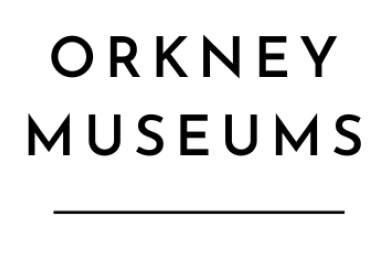Rare Orkney Chair

We are resuming more regular blog posts once again, now that the summer exhibition about Newark is up and running and the new Scapa Flow Museum has opened its doors to the public. Towards the end of last year we were offered a very special Orkney chair, made by the man who was responsible for reversing their fortune, David Munro Kirkness. He saved the chair from extinction, standardised the design and won a contract to supply them to Liberty of London. The story of this particular chair is told below in the words of the donor, Janice Thomson, and our Social History Curator, Ellen Pesci.

[From Janice Thomson]
A number of years ago we inherited an Orkney chair by D.M. Kirkness. Under the chair is an inscription which indicates that the Chair was made by D.M. Kirness in 1901 from the oak couples from St Magnus Cathederal between 1540 and 1555. I have attached a copy of the full inscription for your information.
Just to give you a bit of background: The chair was handed down to my mother-in-law after the death of Robina ( Bina) Gunn who used to stay in Clay Loan, Kirkwall. We then inherited it when my mother-in-law died. We’ve had it for some time now but feel that it should be returned to Orkney as we have no family to leave it to.
I’ve done a little research on the chair and the inscription is the same as was in the order books for D.M. Kirkness for a chair given to Queen Alexandra, although I don’t think it will be that specific chair. [Queen Alexandria was the wife of King Edward VII, this would not be her chair]

We understand that Robina Gunn stayed in Clay Loan, Kirkwall and was a telephonist along with “Dolly” Thomson of Roebank, Hight Street Kirkwall during WW2. She never married and we are not sure if she had any other family members. She is buried in the St Olaf cemetery in Kirkwall ( we found her stone some years ago). We think she was born in the late 1800’s.
Miss Gunn was a friend of my mother-in-law and when she died, left the Chair to her. My father-in-law was the Minister of the old Kings Street Church, Kirkwall, (1951- 1960) and Miss Gunn was a member of the church. We think she died some time later.
We don’t have any further information about her but I hope this is of help.

[From Ellen Pesci, Social History Curator]
Without a single example in Orkney Museum, D.M. Kirkness chairs have almost become the stuff of legend, given that the chair I have often referred to until now is kept on display 700 miles away in the Victoria & Albert museum in London! I always felt quite sad that we couldn’t champion his work in his home island, especially given how it was thanks to him that the status of these beautifully crafted chairs was elevated from the vernacular to commercially desirable furniture back in 1890, a status still upheld by local makers today.
To be offered not only an original D.M. Kirkness chair is wonderful, but for it to have been crafted from the oak used in the extension of St Magnus Cathedral by Bishop Reid in the mid1500s, a time when the buildings which later became Tankerness House were still serving as Catholic manses for the clergy of the cathedral, is a perfectly fabulous connection to the museum.
I am so grateful to Janice and her family for deciding to offer us this chair, it will be cherished in our collection, and will become a much admired artefact in the museum.


After the chair was featured on BBC Radio Orkney this arrived at the museum, as Ellen explains. ‘A day after the radio interview, a couple came in with a little printed D.M. Kirkness catalogue which they’d found in the eaves of their home. The couple had done a bit of research into their home, which is called Margot and situated on Bignold Park road in Kirkwall. Their research revealed that the house had been designed by David Kirkness for his sister, Margaret. It seems as though the catalogues had been stored in the attic, but had made their way into a nook which was only discovered when the couple removed some panelling! I suspect that this catalogue was probably an early 20th century one, given the prices, which are more than double what he was charging in 1890.

To make a donation to any of the museums please follow the link and support us. Thank you.
